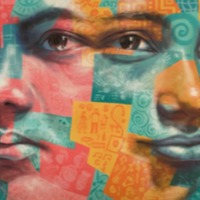
Blu
On any given day in 2016 there were an estimated 40.3 million people in modern slavery across the world, with women and girls accounting for 71% of victims. People looking for work and a better standard of living are often deceived, forced and coerced in to such forms of modern slavery as forced labour, debt bondage, domestic servitude and commercial sexual exploitation. Women and girls made up more than 99% of victims of forced sexual exploitation. Moreover more than 1 million of these victims (21%) were children under the age of 18. Child victims are often difficult to detect by both law enforcement and child protection agents, as such the true figure of children in commercial sexual exploitation is likely to be much higher than the current estimate. Blu was 13 years old when she began seeing an older boy that lived near her school. This boy began forcing Blu to have sex with other men, subjecting her to physical violence when she refused. Though other people in her life – including her mother – knew about her prostitution, no one believed that she was being forced. It was only when she left school at 16 and moved away that she could escape.
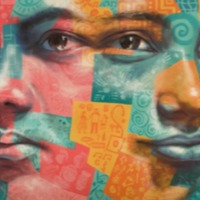
Beth A
Sex trafficking exists throughout the United States and across the world. Traffickers use violence, threats, debt bondage and other forms of coercion to compel adults and children to engage in commercial sex acts against their will. According the US Federal Law, any person under the age of 18 years old persuaded into commercial sex is a victim of sex trafficking – no matter if the trafficker uses force, fraud and coercion or not. In many cases of sex trafficking, victims become romantically involved with someone who then forces or manipulates them into prostitution. Young people who run away from home are particularly vulnerable to sexual exploitation by traffickers: the Department of Justice estimates that 293,000 youth are at risk. The National Center for Missing and Exploited Children (NCMEC) estimates that “1 in 5 of the 11,800 runways reported to the National Center for Missing & Exploited Children in 2015 were likely sex trafficking victims.” In 2015, the most reported venues/industries for sex trafficking included commercial-front brothels, hotel/motel-based trafficking, online advertisements with unknown locations, residential brothels, and street-based sex trafficking. Beth was just 16 when she met a man who said he wanted to be her boyfriend. He invited her to a party in a different state, however on the way there Beth was beaten and drugged. On awaking Beth was threatened with a gun, had her identifying documents taken from her and forced to perform commercial sex work.
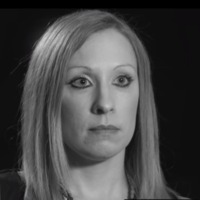
Amy
Sex trafficking is a form of modern slavery that exists throughout the United States. Traffickers use violence, threats, lies, debt bondage and other forms of coercion to compel adults and children to engage in commercial sex acts against their will. The situations that sex trafficking victims face vary, many victims become romantically involved with someone who then forces them into prostitution. Others are lured with false promises of a job, and some are forced to sell sex by members of their own families. Victims of sex trafficking include both foreign nationals and US citizens, with women making up the majority of those trafficked for the purposes of commercial sexual exploitation. In 2015, the most reported venues/industries for sex trafficking included commercial-front brothels, hotel/motel-based trafficking, online advertisements with unknown locations, residential brothels, and street-based sex trafficking. Amy was a single mother struggling to provide for her children when she began working in an adult club. On her second night of work she met a man that offered her what she thought was a legitimate job. Once she reached his place of business, however, she was held against her will and subjected to physical and sexual abuse until she agreed to provide sexual services. In this narrative, Amy talks of the importance of training emergency services on how to deal with sex trafficking victims.
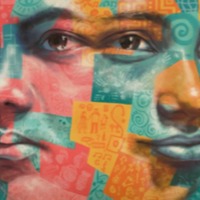
Farah S.
The United Arab Emirates is a destination for men and women predominantly from South and Southeast Asia, trafficked for the purposes of labour and commercial sexual exploitation. Migrant workers make up over 90 per cent of the UAE’s private sector workforce and are recruited from India, Bangladesh, Pakistan, Nepal, Sri Lanka, Indonesia, Ethiopia, Eritrea, China, and the Philippines. Though some travel willingly, they are subjected to conditions of modern slavery including withholding of passports, non-payment of wages, restrictions of movement and threats of physical and sexual abuse. Trafficking of domestic workers is facilitated by the fact that normal protections for workers under UAE labour laws do not apply to domestic workers, leaving them more vulnerable to abuse. Farah S. travelled from Indonesia to Dubai through an agency and became engaged in domestic work. She was hired to work for an elderly couple but found that she had to serve around 20 people. Farah was required to work from 6am to 3am with no rest and no day off, her employer would shout at her and did not pay her for 3 months. When she asked to go back to the agency, she was told ‘I already bought you’. Farah was able to escape this abusive employer and went to live with other ‘runaway’ workers in a rented space, however this turned out to be a brothel.
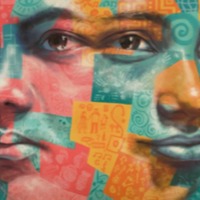
Shandra (Narrative 3)
There are an estimated 57,700 people in modern slavery in the US according to GSI estimates. The US attracts migrants and refugees who are particularly at risk of vulnerability to human trafficking. Trafficking victims often responding to fraudulent offers of employment in the US migrate willingly and are subsequently subjected to conditions of involuntary servitude in industries such as forced labour and commercial sexual exploitation. In 2015, the most reported venues/industries for sex trafficking included commercial-front brothels, hotel/motel-based trafficking, online advertisements with unknown locations, residential brothels, and street-based sex trafficking. Shandra Woworuntu arrived in the US hoping to start a new career in the hotel industry. Instead, she found she had been trafficked into a world of prostitution and sexual slavery, forced drug-taking and violence. It was months before she was able to turn the tables on her persecutors.

Bella A.
The UK is a destination for men and women from Central and Eastern Europe, Asia, Africa and the Middle East often seeking better livelihood opportunities. The latest government statistics derived from the UK National Referral Mechanism in 2014 reveal 2,340 potential victims of trafficking from 96 countries, of whom 61% were female. The majority of adults classified as victims of sexual exploitation and the largest proportion of victims was from Albania. In 2015, the most reported venues/industries for sex trafficking included commercial-front brothels, hotel/motel-based trafficking, online advertisements with unknown locations, residential brothels, and street-based sex trafficking. Bella was living in Albania when her marriage failed and she became estranged from her family. During the financial crisis beginning in 2008 Bella’s business began to struggle, so she began to look for work. Not originally planning to go abroad, Bella was offered an opportunity to work in a restaurant in Belgium. However, when she went to go and see the work she would be doing, she was forced in to a lorry and her documents were taken off her. The lorry took Bella to the UK where she was forced into sexual exploitation. She was able to seize a window of opportunity one day and ran for two hours to freedom. She was taken by police to Rahab Adoratrices, a charity founded in 2009 to care for women affected by human trafficking for sexual exploitation.

Marina
In Russia it is estimated that thousands of women and children are subjected to commercial sexual exploitation and sex trafficking in prostitution and pornography. Women are lured by the promise of lucrative employment and a new location, travelling to the country under the pretence of legitimate employment and a better life. However when they arrive, they are forced into prostitution in brothels, hotels and saunas. There is also evidence of traffickers advertising sexual services of children online. However, despite the evidence of sex trafficking in Russia, it remains an under-recognised area of enslavement in the country. Recently split from her husband and in need of money Marina replied to a newspaper advertisement for a seamstress in Moscow. It was upon meeting her employer that Marina was transported to a house underground along with six other women, and informed that she was now enslaved as a sex worker. Forced to live in unhygienic conditions and required to submit to any clientele request or face physical violence, Marina was only able to escape when she was declared ‘unfit’ to work.

Chaivoeurn
Cambodia was renowned as a sex tourism destination in the 1990s and this legacy is still prevalent today with women and girls trafficked within the thriving sex industry in Cambodia's major cities. Despite significant attempts to curb CSE, NGOs report the industry has been pushed underground and sex offenders are still able to purchase sex with children through an intermediary rather than more overt selling of sex in brothels. Boys and young men are also vulnerable to sexual exploitation, with many entering the massage industry due to a lack of training and skills. Chaivoeurn travelled to Phnom Penh with her aunt for work to help her parents pay off their debts. Told she would be working for a family, when she arrived Chaivoeurn was locked up, starved and tortured until she agreed to work sleeping with clients. Forced to serve clients every day to pay back debts incurred from her sale, Chaivoeurn worked for 8 years in different brothels. She was only able to escape from bondage after police arrested her during a raid and she was referred to social services.

Anna
It is reported that two-thirds of the world's enslaved population are in the Asian-Pacific region. Men, women and children are subjected to all forms of modern slavery including forced labour, domestic servitude, forced begging, commercial sexual exploitation and child soldiers. The high prevalence of modern slavery in the region reflects the reality that many countries in Asia provide low-skilled labour for the production stage of global supply chains. Anna had just left school and was looking for a job when her aunt’s next door neighbour promised her a well-paid job as a waitress overseas. She was told that her airfare would be paid for, however after being taken to where she would be staying, she was told that she owed $50,000 and must work as a prostitute to pay it off.

Anna A.
Despite having the lowest regional prevalence of modern slavery in the world, Europe remains a destination, and to a lesser extent, a source region for the exploitation of men, women and children in forced labour and commercial sexual exploitation. According to the most recent Eurostat findings, European Union (EU) citizens account for 65 percent of identified trafficked victims within Europe. These individuals mostly originate from Eastern Europe, including Romania, Bulgaria, Lithuania and Slovakia. Within cases formally identified by EU authorities the largest proportion of registered human trafficking victims were female, making up around 80% of all victims. Anna was 20 years old when she was trafficked by neighbours from Romania to the Balkans where she was forced to be a prostitute for two and a half years. Anna was finally able to escape when rumours of a raid meant she, along with the other girls she was enslaved with, had to be moved and one of her clients offered to help.
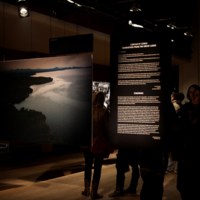
I Dream of Congo, Touring Exhibition, Congo Connect
‘I Dream of Congo: Narratives from The Great Lakes’ is a unique exhibition combining words and images from renowned international creatives alongside a groundbreaking exhibition of photos taken by women in eastern Congo. The exhibition celebrates the hope and optimism that pervades in the region despite years of war. It poses hard questions around the international community’s inaction in the face of the conflict, the continuing illicit trade in minerals from Congo and the failure to stem the tide of sexual violence.
During the February 2013 exhibition launch, The Frontline Club, Women for Women International, One Billion Rising and Save the Congo held events in the space that related to the theme. The exhibition was first shown in February 2013 at Conway Hall London, before moving on to other venues in the UK, including a conference on the Democratic Republic of Congo at St Andrews University in April 2013. In 2014, 'I Dream of Congo' formed part of the 'Brutal Exposure' exhibition at the International Slavery Museum in Liverpool. Most recently, the exhibition appeared at the June Global Summit to End Sexual Violence in Conflict in London's Excel Centre, spearheaded by William Hague and Angelina Jolie. At this Summit we hosted an exclusive event and film screening with Dr Denis Mukwege.
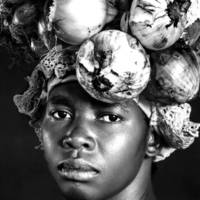
Women of the Congo: Photography of Isabel Muñoz and Concha Casajús, Museo Nacional de Antropologia, Madrid (17 March - 18 June 2017)
The Democratic Republic of the Congo has been plagued by conflicts over control, extraction and distribution of natural resources such as coltan, diamonds and oil. In this exhibition, photographers Isabel Muñoz, National Photography Award 2016, and Concha Casajús present the struggle of Congolese women in the face of the use of sexual violence as a weapon of war. The show is a series of portraits and testimonies of women from Bukavu, in the province of South Kivu, in the east of the country. The exhibition aims to make the situation of these women visible, as well as the violence they suffer. But at the same time, it invites us to reflect on the way in which these women face such suffering, rejecting in many cases the status of victims and trying to survive with dignity. Many have managed to get rid of this stigma and have struggled collectively to become activists and successful women. All a song to those women who have broken the silence and, from mutual support and sorority, have become true heroines of this twenty-first century.
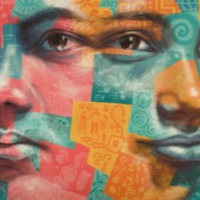
Julie
There are an estimated 784,000 people living in modern slavery in the Philippines (GSI 2018). Men, women and children are subjected forced labour and sex trafficking both within the country and in destination countries. Women and children are subjected to sexual exploitation in brothels, bars, and massage parlours, online, as well as in the production of pornography. The Philippines is an international hub for prostitution and commercial sex tourism – a highly profitable businesses for organised criminal syndicates. The demand for sex with children among both local and foreign men has continued to fuel child sex tourism. Rising internet usage rates, the availability of mobile phones and poverty has fostered online child sexual exploitation. Immediately after graduating from high school, Julie was enslaved in Manilla where she danced and entertained customers. She escaped and returned home, but reflects on her friend Carmen who wanted to go to Japan, as they had originally been promised, where she was enslaved in prostitution.
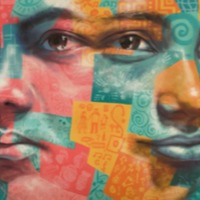
Farida
Born in Armenia, Farida was trafficked to Turkey, where victims also arrive from Ukraine and Moldova. As well as Turkey and the UAE, Armenian women and girls are trafficked for sexual exploitation to Russia, Greece, and other European countries. In this narrative, Farida discusses the pressures that led to her seeking out work in another country, and also reveals that fear of the immigration police in Turkey made it harder for her to leave her situation. Like many others who return to their home country after being trafficked abroad, Farida notes that her circumstances are still as precarious as before she left.
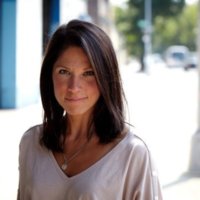
Carissa
Carissa Phelps is the Founder and Chief Executive Officer of the organisation Runaway Girl. She grew up in California and, enduring a troubled home life, dropped out of school when she was 12 and ran away. After meeting a pimp, she was forced into prostitution, and later arrested alongside him. After returning home she was arrested for joyriding and sent to a juvenile detention centre, where she began to receive therapy and an education. She went on to graduate from high school, university and obtain a law degree from University of California, Los Angeles (UCLA). A documentary about her story was released in 2008, named Carissa.
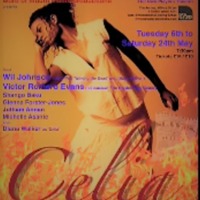
Celia
Word of Mouth Media Production, based in Southwark, staged a production of Celia at New Players Theatre in London. The play was directed by Malcolm Frederick and written by Richard Nyeila, inspired by Melton A. McLaurin's biography 'Celia A Slave'. Based in the mid-19th century, the story revolves around Celia, an enslaved woman on trial for murdering her abusive owner.

Barbara
Barbara Amaya is an award winning author, advocate and survivor. From the age of 12 she was trafficked in Washington DC and New York for over a decade. A sought-after speaker and advocate for trafficking victims and survivors of trauma everywhere, Barbara has shared her story on television and college campuses as well as with multiple civic, legal, faith and women’s organizations. Barbara is called upon by law makers and law enforcement to train others and to add her expert testimony to aid in the passing of human trafficking legislation in her home state of Virginia as well as other states. In 2014 Barbara was awarded the James B. Hunter Human Rights Award. She is the author of the book Nobody's Girl: A Memoir of Lost Innocence, Modern Day Slavery and Transformation (2015).

Holly (Narrative 1)
Holly Austin Gibbs (formerly Smith) is a survivor of child sex trafficking and an advocate for survivors of all forms of human trafficking. In 2011, Holly submitted joint testimony to Congress with labour trafficking survivor, Ima Matul, in support of reauthorization of the Trafficking Victims Protection Act. Holly also testified before the U.S. Congressional Subcommittee on Africa, Global Health, Global Human Rights, and International Organizations on the connection between sporting events and sex trafficking. In 2015, Holly testified before the U.S. Senate Judiciary Committee on behalf of two bills: Justice for Victims of Trafficking Act and Stop Exploitation Through Trafficking Act. Another narrative by Holly can be found in the archive.
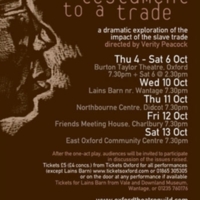
Testament to a Trade
Testament to a Trade was a play produced to mark the bicentenary, with close reference to Oxfordshire. Written by three local writers, the play was produced by Oxford Theatre Guild in collaboration with Oxfordshire Record Office and the Oxford Playhouse. Testament to a Trade weaves accounts of past and present slavery, and is situated in historical and contemporary contexts, notably 18th century Africa and Oxford, and contemporary Eastern Europe and Oxford. A number of archive materials relating to slavery and abolition are held by Oxfordshire Record Office, information on which inspired elements of the story. A teachers pack was produced to inform similar projects. The play opened at Burton Taylor Theatre in Oxford, and toured venues across Oxfordshire.
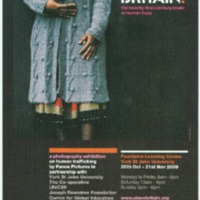
Slave Britain: The 21st Century Trade in Human Lives
This photographic exhibition focused on human trafficking was produced by a partnership of Panos Pictures, Anti-Slavery International, Amnesty International, Eaves and UNICEF. Photographer Karen Robinson’s portraits and tales of women trafficked into prostitution explore the devastating impact on their lives. Also on display were David Rose's panoramic photographs of the ordinary British streets where the stories of modern-day slavery have been played out. The photographs were mounted on a cage-like structure which was specially designed for the exhibition at St Paul's Cathedral. The exhibition was also shown in Edinburgh, Hull and Warsaw, and in 2008, in York.